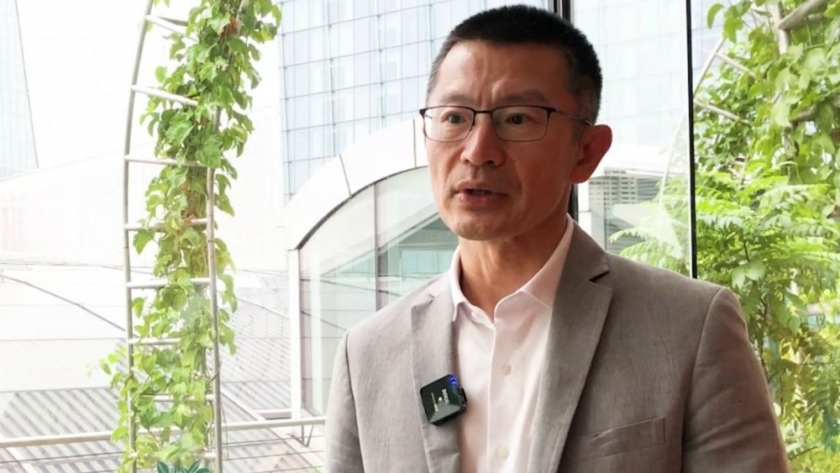
By Agroempresario.com
In the face of growing global challenges—climate change, resource scarcity, and shifting consumer habits—China is turning to artificial intelligence (AI) to transform its food system. From tackling food waste to enhancing precision agriculture and developing alternative proteins, AI is reshaping how China grows, distributes, and consumes food. For a country with over 1.4 billion mouths to feed, the integration of AI into the food sector is not just an innovation—it's a necessity.
Food waste has long been a concern in China, and in recent years, the government has responded with robust action. The 2020 “Clean Plate Campaign” exemplifies China’s commitment to tackling the problem at the consumer level, encouraging citizens to avoid leftovers and reduce portion sizes. But behind the scenes, AI is making a deeper impact.
Smart ordering systems and AI-powered inventory tools are helping restaurants and food retailers predict demand with remarkable accuracy, reducing the risk of surplus. Yum China—the operator of fast-food chains like KFC, Pizza Hut, and Taco Bell—is leading the way. Its KFC Super App utilizes AI to make personalized menu recommendations, minimizing food waste and enhancing efficiency. These efforts are part of Yum China’s broader environmental, social, and governance (ESG) initiatives that align with international sustainability standards.
In cities across China, smart systems are helping food outlets align inventory with actual consumption patterns, dramatically cutting waste and reducing carbon footprints. With China's rapid urbanization and a tech-savvy population, these AI-driven solutions are scalable and influential.
Agriculture is another area where AI is redefining traditional practices. China’s “Smart Agriculture Action Plan 2024–2028” underscores the country’s ambition to digitize rural landscapes. AI-driven drones, smart sensors, and satellite imaging are being deployed in agricultural provinces to monitor soil moisture, detect pests early, and assess crop health in real time.
These technologies improve yield, reduce the use of fertilizers and pesticides, and help smallholder farmers make data-informed decisions. By connecting farms to data platforms, China is enabling better resource allocation, reducing environmental impact, and enhancing food security. AI is no longer a luxury—it is becoming an essential tool in rural development.
At the heart of China’s AI-powered food revolution lies the rise of alternative proteins, an area receiving major investments from firms like Dao Foods International. Co-founded by Tao Zhang and Albert Tseng, Dao Foods aims to reduce China’s reliance on animal-based proteins by fostering the growth of startups in the plant-based and fermentation sectors.
Companies like ZhongGu Mycelium, based in Inner Mongolia, are using AI to improve their production of mycelium-based protein. By breaking down the research and development cycle into smaller components and applying machine learning at each stage, they enhance yield and product quality. These innovations are bringing scalable, protein-rich solutions to consumers without the environmental drawbacks of traditional meat.
Meanwhile, plant-based company Starfield uses AI to refine textures and flavors, ensuring their products suit local tastes while meeting international benchmarks. By analyzing consumer data, ingredient combinations, and taste profiles, AI helps optimize offerings to win over increasingly health-conscious and eco-aware Chinese consumers.
The role of AI doesn’t stop at food production—it extends into daily eating habits. Platforms like Meituan and Ele.me, giants in China’s food delivery market, use AI to recommend meals based on user preferences, dietary needs, and regional culinary traditions.
From spicy Sichuan cuisine to light Cantonese dishes, algorithms now cater to a wide range of palates. These systems also promote sustainability by suggesting seasonal and locally available ingredients, reducing the need for long-haul transportation and preserving freshness.
Even hotpot culture—a staple in Chinese dining—has seen a tech makeover. In 2018, Haidilao opened the world's first AI-powered restaurant in Beijing. With robotic servers and a digital ordering system, customers receive a tailor-made dining experience that is as efficient as it is engaging.
Ensuring the integrity of the food supply chain is another area where AI is proving critical. Dairy giant Mengniu, in collaboration with Alibaba, is using AI to optimize milk collection routes and maintain quality control. By analyzing environmental and logistic data, the system reduces waste and speeds up delivery.
Alibaba has also ventured into blockchain-powered traceability. In one experiment, the company used AI to track the origin of a mango package in just 2.2 seconds—a stark contrast to the nearly seven days required using traditional methods. This level of transparency is crucial for maintaining food safety and building consumer trust, especially in a post-pandemic world.
AI's potential to improve the food system is not just technological—it is ethical. As Tao Zhang of Dao Foods emphasizes, the application of AI in food must align with sustainability, health, and accessibility goals. In a country that experienced food scarcity not too long ago, the drive to create resilient food systems is deeply personal for many, including Zhang himself.
China’s efforts illustrate how AI can be used responsibly to meet pressing social and environmental needs. From providing nutritious, affordable food to reducing the carbon footprint of farming and dining, AI is becoming the bedrock of a better food future.
As the world grapples with feeding a growing population under the constraints of climate change and diminishing resources, China's AI-powered food transformation stands out as a model. Whether it’s smart farming in the countryside, sustainable proteins in research labs, or personalized meals in bustling cities, the country is weaving AI into every link of the food chain.
By embracing AI not just as a tool, but as a partner in innovation, China is proving that technology and tradition can coexist—and even thrive together—in building a food system that is ethical, inclusive, and forward-looking.
